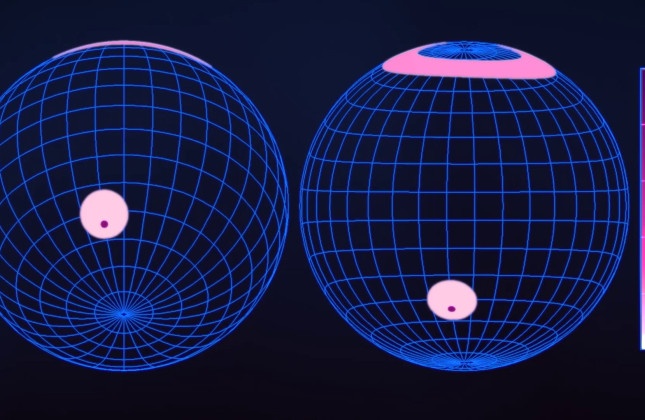When a massive star explodes as a supernova, it often leaves behind a pulsar. These fast-spinning stellar remnants have fascinated scientists since their discovery in 1967. One nearby pulsar spins 174 times per second, and now its size has been precisely measured. Using instruments on the International Space Station, researchers measured X-ray pulses from the star. They then used supercomputers to analyze its properties, finding that it has a mass 1.4 times that of the Sun and a diameter of just 11.4 km.
The death of a massive star leads to one of many celestial objects, two of which are closely related: neutron stars and pulsars. Both form during the core collapse and supernova explosion that marks the death of a star. All the components of the atom are crushed together, eliminating all the space between the neutrons and forming one massive neutron. Pulsars are rotating neutron stars with a strong magnetic field that emits beams of electromagnetic radiation from their magnetic poles. These beams are visible from Earth when aligned with the line of sight, creating a pulsating effect, hence the name “pulsar”.
One of the closest pulsars, PSR J0437-4725, is 510 light-years away in the constellation of Scorpio. It spins 174 times per second, so it completes one revolution every 5.75 milliseconds. Even more impressive than its speed is its size: Imagine a mass 1.4 times that of the Sun being squashed into a sphere 11.4 kilometers in diameter. For comparison, the Sun has a diameter of 1.39 million kilometers.
This surprising result about the smallness of the pulsar is the result of precision measurements by a team of astronomers from the University of Amsterdam. The scientists used data from the NICER X-ray telescope on the ISS, combining it with a technique called pulse profile modelling. The data was fed into the Dutch national supercomputer Snellius, which created a complex statistical model. This allowed them to calculate the radius of the star, assisted by mass measurements by Daniel Reardon (Swinburne University of Technology, Australia) and his colleagues at the Parkes Pulsar Timing Array. Not only was the team able to determine its exact dimensions, but they were also able to map the temperature distribution at its magnetic poles.

Lead researcher Devarshi Choudhury is very happy with the result: “Previously, we had hoped to be able to calculate the radius accurately, and it would be great if we could show that the hot magnetic poles are not diametrically opposed to each other on the star’s surface. And we managed to do both!”
The team’s paper reports what they call a softer equation of state, which means that the increase in pressure with respect to the change in density is smaller. This suggests that the maximum mass of a neutron star is likely to be lower than previous theories predicted. This observation is in good agreement with the observation of gravitational waves from neutron stars.
sauce : The nearest millisecond pulsar has a radius of 11.4 kilometers and a mass 1.4 times that of the Sun.


